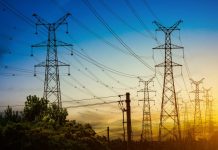ISLAMABAD: Pakistan has recently made a headway on developing virus-free potato, WealthPK reported on Friday.
In order to get optimum yields of disease-free potato, the departments concerned of the government have decided to use Gilgit-Baltistan for growing virus-free potato.
It mentioned here that potato has become an important crop for both farmers and consumers in Pakistan over the years. It is the fourth most extensively produced food crop after wheat, rice, and maize, providing the farmers with good yields and handsome profits and generating a handsome foreign exchange.
Though potato is grown countrywide, Punjab is the leading potato producing province followed by Khyber Pakhtunkhw…
[8:43 pm, 11/02/2022] Editor In Cheif : Lahore-Matiari transmission line to stabilise Pakistan’s power system
ISLAMABAD, Feb. 11 (INP): Lahore-Matiari transmission line will stabilise Pakistan’s power system, WealthPK reported on Friday.
The report says, countries across the globe have shifted their attention to distributed power generation rather than conventional centralised bulk generation.
Because of its environment-friendly nature, distributed energy resources like wind and PV (photovoltaic) have attracted the interest of governments and researchers.
The increased infiltration of distributed generation to the power system has brought some technical and economic challenges such as long-distance transmission, transmission lines efficiency, control capability and cost.
To mitigate these complications and transmit bulk power from remote generation sites to load centres, the utility of high voltage direct current (HVDC) transmission has emerged as a possible solution. Long-distance power transmission is primarily required in order to connect the various regions of the country and to effectively utilise the available energy resources, WealthPK reported.
China is leading the HVDC market overall with 29GW added in 2020 alone, accounting for approximately 73 percent of the global market share in terms of capacity. In Pakistan, China’s Belt and Road Initiative (BRI), which aims to create land and maritime trade routes in Asia and beyond, has seen Beijing offer over $60 billion for energy and infrastructure projects.
In this regard, Pakistan’s first private sector Matiari-Lahore HVDC transmission line has become operational in September 2021. The Matiari converter station will be connected with multiple power stations being developed under the CPEC projects.
The Lahore converter station will be connected to the new Lahore sub-station from where electricity will be transmitted to the national grid. This project is 878km long with 660KV HVDC transmission line being built under the framework of China’s BRI.
This project line is the largest ever transmission sector project of the country in terms of its capacity and one of the longest in distance, connecting power generation units in the south with load centres upcountry.
According to the analysts, this project has brought new technology to Pakistan and will evacuate power from power plants located in Sindh to northern load centres to meet their energy needs.
The construction of Matiari-Lahore transmission project started in December 2018 and around 7,000 jobs had been created for the locals during the construction period.
The CPEC will enable the country to boost industrial production, upgrade energy and communication infrastructure, and improve regional connectivity.
The HVDC technology is widely used around the world for long-distance high-power transmission from generating stations in remote areas to densely located load centres.
Over the next five years, the worldwide HVDC market is predicted to grow at a CAGR (compound annual growth rate) of 3 percent. The expansion in offshore wind farms is a major element driving demand for global HVDC capacity.
The northern regions of Pakistan are rich in hydroelectric potential, but far away from the load centre. In addition, the southeast part of the country (e.g., Thatta in Sindh) is rich in wind energy, whereas the substantial demand for load exists in Punjab province in the eastern part of the country, and in the southern part of the country, such as Karachi, the economic hub of Pakistan.
So, to connect different parts of the country, economic and efficient network of the long-distance power transmission lines is becoming a necessity. Moreover, the government is planning to import electricity from the neighbouring counties e.g., Iran, China, India and Tajikistan. The HVDC transmission can also be utilised for such purposes. -INP





